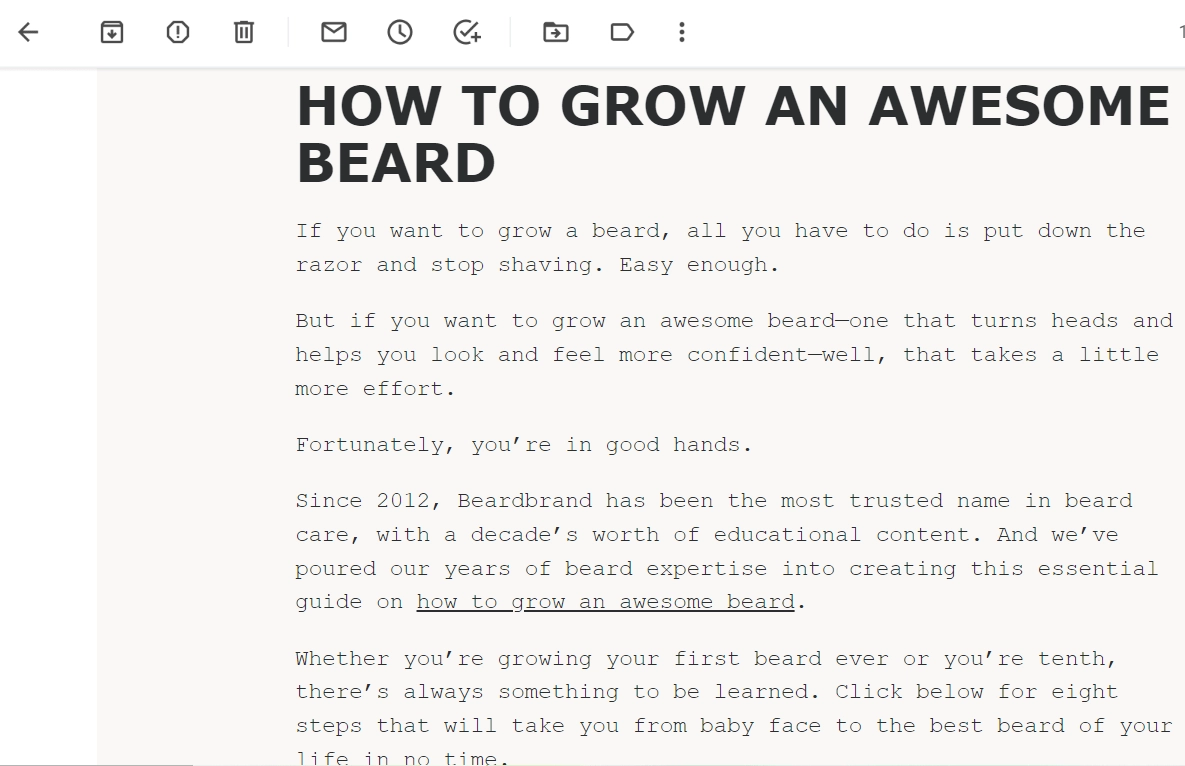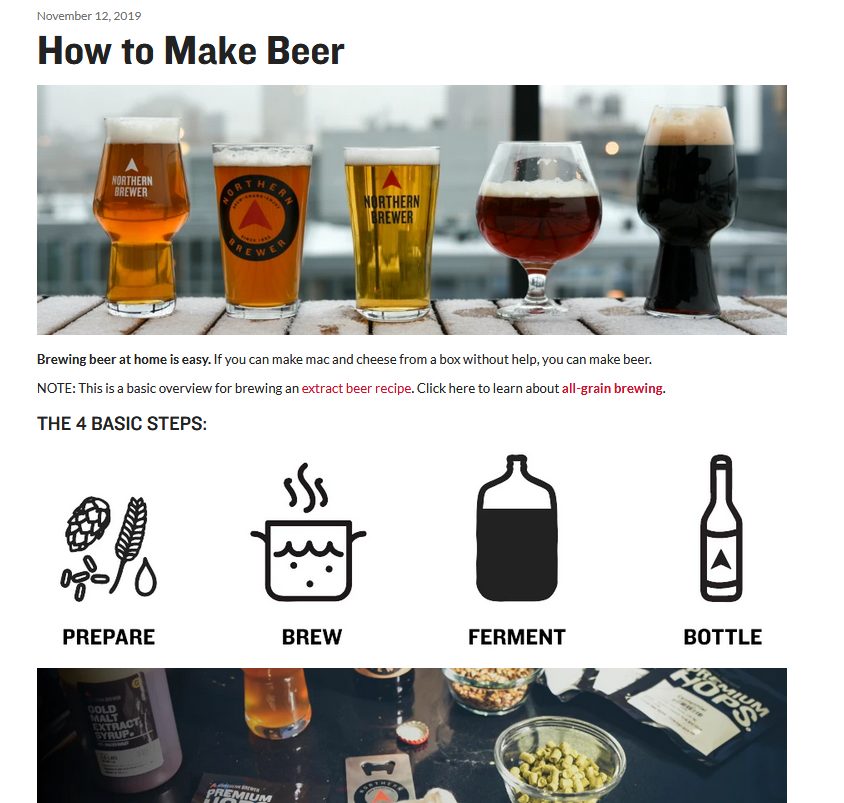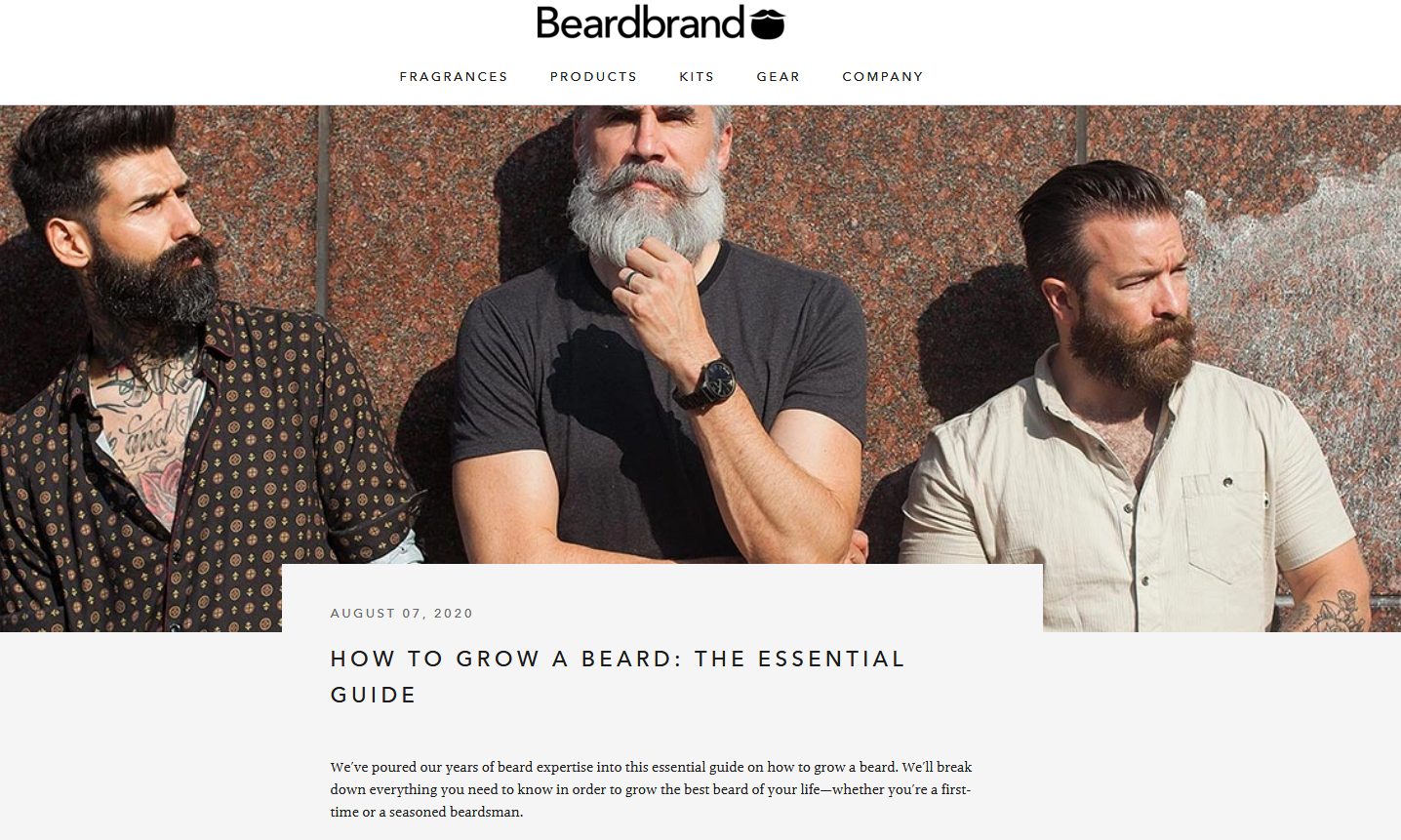Any eCommerce business can stand out from the crowd by creating the right content. You don’t need to have a marketing budget to match retail giants like Amazon. By incorporating content marketing into your marketing strategy, you can set yourself apart and boost your sales.
It doesn’t matter what is the size of your business or what kind of a brand you are. Powerful content will help you find the right customers. With the right tools and process, anyone can do this to great effect.
What’s the right approach to content marketing for your eCommerce brand? This article brings you some of the best eCommerce content marketing examples from which you can draw inspiration for your brand.
Ecommerce Content Marketing Strategies
First, what exactly does eCommerce content marketing cover?
Content marketing is all about creating and distributing content to interest and engage your audience. As an eCommerce business, content marketing is an excellent way to attract new customers, generate sales, and increase loyalty to your brand.
The number one rule with any content marketing plan is to add value to your audience. This involves understanding your audience, their interests, questions, and pain points, and addressing this with your content. Your content should be informative, interesting, and educational. entertaining. Your goal isn’t to just push products and drive sales. Instead, you want to engage your audience and provide them with value.
There are many different ways that you can do this. Here are some of the most important content marketing strategies for eCommerce businesses.
1. Blogging
Writing blog posts is one of the most valuable forms of content marketing for online stores. Blog posts allow you to target specific keywords, which helps your eCommerce store to improve its SEO and rank for the right search queries.
Blogging is also 100% free to do, and it gives you a platform to dive deep into certain topics and provide a lot of value.
As an eCommerce business, you can use your blog to write content that answers your customers’ questions and helps them understand the value of your products.
For example, if you sell running shoes, you could write blog posts about why the right running shoes are important for your feet, how to choose the right running shoes, and what types of running shoes are best for different conditions. These topics all add value to customers wanting to purchase running shoes. If they find your content valuable, you can send them straight to your online store.
Here is an example of the kind of blog posts coffee eCommerce business could write:

2. Video
While SEO blog content may be the most classic form of eCommerce content marketing, video is the most engaging.
Video is more popular than ever, and this isn’t slowing down any time soon. The most common example of video content marketing is YouTube content. YouTube is an excellent place for eCommerce brands to build an audience and share valuable content.
You can approach your video strategy in a similar way to your blog content strategy. Although, you can also include more visual types of content here. Things like product demonstrations, unboxing videos, and explainer videos about how to use your products are all great ideas.
For example, here is the kind of video content that an eCommerce store could use to provide helpful tips around its products:
3. Podcasts
Although video may reign supreme in the online world, podcasts are still as popular as ever. As an eCommerce store, podcasts can be a great way to explain your products in more detail and give your audience more reason to purchase your products.
You can also use other popular [podcasts to promote your products. Look for a podcast with an audience that matches your target customers, and see if you could include a sponsored brand mention. This is another effective content marketing strategy.
4. Social Media
You can’t talk about content marketing without mentioning social media. Social media covers a broad area of different channels and forms of content. This could include short-form videos (like TikToks and Reels), regular Facebook and Instagram posts., Pinterest Pins, live videos, and more.
You can even make use of the many different social commerce features that exist on different channels. This is when you can sell products directly through the social media app.
Whatever kind of social media content you focus on, the same important concept remains. This is to understand your audience and create content that adds value to them. This content could be purely educational, promotional, or just fun to spread brand awareness.
here is an example of how an eCommerce store could create TikTok content to help them reach more customers.
@vessi Reply to @mialvinci if you’re @RunningJord ♬ original sound – Vessi
5. Email Marketing
Email is essential for any successful content marketing strategy. It offers an incredible ROI, it’s easy to use, and you can send highly targeted messages to help you achieve results.
while there are loads of email marketing strategies for eCommerce that you can use, the general idea is to target relevant people with relevant content. This could be sharing your other forms of content (like blog posts and videos), or writing interesting emails that engage your prospects and inspire them to make a purchase.
Take a look at this email marketing example to sell men’s grooming products.

Ecommerce Content Marketing Examples
the eCommerce content marketing strategies listed above cover a few of the most popular approaches. Within these strategies, there are loads of different approaches you could take.
Here are a few great eCommerce content marketing examples that your brand can get inspired by.
1. REI
REI is an outdoor and lifestyle brand that is not shy about content marketing. Their content is laser-focused on their niche, which has helped build an enthusiastic community around the brand. They have numerous articles on outdoor activities, from bicycling to snowboarding.
REI replicates its content-first approach across its social media platforms, where they further engage with outdoors enthusiasts.
Instead of bombarding their potential customers with hard sells, they first bring them value and build trust, ultimately leading to conversions.

They offer their community expert resources to help them plan their outdoor activities. These resources are tailored for all outdoor enthusiasts, from beginners to seasoned adventurers. These resources cover topics from choosing outdoor gear for yourself, family, and even pets to trusted hiking guides to help you plan your next big adventure.
Actionable Tip: The first step is to plan your content in advance for 6-12 months. Think about all the ways someone would use your product and build content categories to address each. For example, let’s say a surfboard brand was planning the type of content they want to produce for their blog. One category that would be useful for their customers could be “Surf Forecasting.” Content in this category would be all about reading forecasting charts, conditions that produce the best waves, etc. This content would provide a lot of value to readers, which continues to bring them back to the site leading to more purchases of surfboards.
2. Northern Brewer
Northern Brewer approaches content marketing by creating educational content about brewing. It guides its reader community on brewing beer at home with tutorials designed to help beginners perfect their brewing skills.

This content is intended to guide customers into purchasing their home-brewing starter kit. Instead of focusing on the benefits of their products, Northern Brewer chooses to educate customers on the ingredients, equipment, and process of making beer at home.
Northern Brewer shares its expertise about brewing to help consumers with a knowledge gap in the niche. The result is a base of customers who leave positive reviews and engagement with the brand.
Actionable Tip: If you sell a product that’s a bit more complicated to use, then Northern Brewer is a good example of producing content that gives your customers the how-to’s of using it. Consider a mix of written blog posts and video content showing how to use the products. A YouTube channel and a Podcast can be great compliments to building a loyal following while guiding your customers.
3. Betabrand
Betabrand collaborates with customers and aspiring designers around the world to create their products. They use user-generated content to promote their brand and cultivate a community.

Users can submit their designs for new products, which other community members then vote for. The result of user-generated content is that the brand reaches more users since designers are keen on having their designs selected. New people learn about the company, and if interested, they join a community of loyal and enthusiastic customers and designers. Besides, the company creates products that its customers will enjoy buying.
Actionable Tip: Getting your customers involved in your business is an effective way to create a highly engaged audience. These stories can then be used a social proof across your site and social channels to attract new customers.
4. Beardbrand
Beardbrand is a beard-centric brand that is successfully implementing content marketing to educate and sell its products. They provide value to their community through educational content around growing and maintaining a healthy beard.
Whether through their blog or email funnels, they educate their customers first, letting them know the basics about caring for their beards. This education-as-marketing approach has helped them build a loyal audience of beard-growers and propel the brand as an authority on the best care practices, tools, and products for a healthy beard.

Through content marketing, Beardbrand has grown from living in a world where beards were frowned upon to creating a culture that embraces and accepts beards without the community having to conform to or embrace previously held stereotypes about men who grew beards.
Actionable Tip: Products that are a bit more personal in nature can be an excellent opportunity to build a loyal fan base. Use your content to showcase your customers who are proud to represent your brand, like the example above from Beardbrand. Combine your educational content with examples from customers to show the result.
5. Herschel Supply
If you are selling a premium product, here is a brand to learn from. Herschel Supply sells design-driven products for everyday journeys. They don’t market as cheap or easy to buy; instead, they have created a strong brand around a lifestyle. They are all about leisurely travel and sophistication.
Their content focuses on leisurely trips and the experiences customers can derive from their products instead of creating content that solely seeks to sell their products. They integrate their products subtly into their content, which features rich stories about travel, photography, and design.
View this post on Instagram
While they embrace diverse stories, they keep them aligned to their mission. To present different travel experiences without alienating their core customers interested in their products.
Actionable Tip: Create content that speaks to your niche, then creatively intermingle your product into the content. For example, let’s say you are a pool supply brand looking to engage with customers through content. You could create content about new games your family can play in the pool this summer and intertwine different products of yours that can be used as part of those games.
6. OKEx
OKEx is one of the largest online cryptocurrency exchanges in the world. With a product as complex as buying, selling, and trading cryptocurrencies, brands like OKEx have to invest heavily in educational content and tools that help investors analyze trends. They provide market analysis pages for each cryptocurrency to show things like Bitcoin price trends and historical data that help investors make the right investing decisions.

Providing users with all the tools and analysis they need to make informed investment decisions is what has propelled OKEx to significant growth. Other brands can learn from this strategy to create free tools and educational content that helps solve a problem or provide information that helps them make purchasing decisions. This strategy builds trust between customers and your brand, leading to increased conversions and brand loyalty.
Actionable Tip: Providing historical data and analysis is vital for a lot of products and services. Consider creating content or building simple tools that showcase the important data for your customers. These will become resources that customers continue to come back to, leading to increased customer lifetime value.
Key Takeaways
eCommerce brands can become stale in how they engage with their customers by simply marketing their products’ features and functionality. Focus your content on the customer, not your product. Instead of promoting your product, talk about the customers’ problems and how they can solve them. Use content types such as product guides or in-depth articles that answer your customers’ most pressing questions.
The brands above have shown that they can create content that brings customers deeper into their story and builds lasting relationships. Here are some key takeaways brands can leverage in their content marketing efforts:
User-Generated Content
Engage your customers or community in product creation (user-generated content) to give them a voice of their own during product development. By empowering your customers, you create an incredibly loyal following while simultaneously conducting market research. Using this content to spread through your marketing channels also showcases how your brand listens to what its customers want.
Help Purchase Decisions Through Guides
Comprehensive product guides are necessary to give customers all the essential information they need to make the right purchasing decision. Include things like the differences between different types of the same product, what they’re made of and how they can be used. Combining this with live customer service agents via on-site chat and phone gives customers all the support they need to make the best possible purchase.
Test, Measure, and Iterate
As you start to implement content marketing strategies for your eCommerce brand, you need to take the “fail fast and iterate” approach. This approach focuses on creating smaller test campaigns to launch and test how effective they are quickly, then iterate, relaunch, measure, and repeat to find the most effective strategies.
Before you start this process, plan all the different content marketing tests you want to run. Create definable KPIs to measure and set up the A/B tests to determine the winners of each. Make sure you have a centralized KPI dashboard to bring all the necessary data points into. This gives the entire team a clear picture of performance for each test.
As you iterate through each test, find clear winners and scale the ones that work the best.
Wrapping Up
eCommerce businesses aren’t always known for their creative marketing strategies. With so many online retailers focused on ad spend and shopping cart conversion optimization (both also important), there’s an opportunity for marketers to use content marketing to attract new customers and build brand loyalty. Ultimately, people buy from people they like and align with their values. Content allows you to make that connection. Give your customers a voice, provide them helpful content, optimize those efforts through testing and iteration, then watch a community of loyal customers flourish.

Written by our guest writer Matt Shealy
Matt Shealy is the President of ChamberofCommerce.com. Chamber specializes in helping small businesses grow their business on the web while facilitating the connectivity between businesses and more than 7,000 local Chambers of Commerce worldwide.

